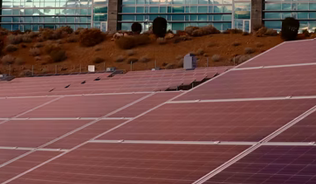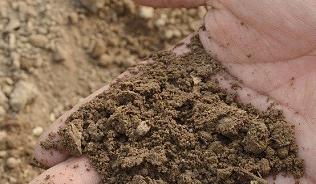environmental SCIENTIST | Reading the landscape: heritage and the environment | December 2013
When one mentions archaeology to a non-archaeologist, the discussion will invariably move rapidly to Time Team, and “that chap with the long hair”. That is archaeology for most people, including those involved in environmental disciplines; truth be told, many archaeologists would contend that archaeology can and should fit into this neat box as well. However, as always, the reality is somewhat richer – archaeology is trowels, mud and old pottery, but archaeology and heritage also contribute in a wider sense to our shared environment. There is also the point that changes to that environment will affect archaeological remains, and therefore our ability to study the past and learn lessons from those who have gone before.
What actually is archaeology?
A common definition is “the study of changes to human society through its material remains”, and this clearly encompasses the traditional image of archaeology, but also casts itself more widely to include almost anything you can think of: if humans have made it, then it is archaeology (or, at least, archaeology in the making). Even the landscape in which we live is archaeology – for example, the majority of the woodland clearance that has taken place since the British Isles were recolonised after the last Ice Age occurred during the Neolithic Period between 4000 and 2500 BC. And therefore many of our most valued habitats for wildlife, such as heathlands and bogs, are a direct result of this human intervention in landscape.
As well as this wider archaeological origin of our day-to-day environment, many early archaeological sites serve to highlight humans’ relationship with the environment in the past. Monuments such as Stonehenge or Avebury are rather obvious examples, but good ones nevertheless. Internationally famous, Stonehenge for many people is the quintessential archaeological site: enigmatic evidence of the ability of humankind to mould nature, quarrying vast stones and transporting them many miles without the benefit or knowledge of the wheel. However, it is not the physical achievement of moving the stones that is most significant, rather it is how they were arranged that tells us more about the actual people who built Stonehenge, and their relationship with their environment.
It is well known that the stones of Stonehenge are aligned to the movements of the Sun, and this article will not attempt to discuss the many competing theories on this – the detail is less important than the overall lesson that can be drawn from the site; that the movement of the Sun is intrinsically linked to the seasons, and that the seasons had a profound importance for the population of Britain at this time. The predictability of the seasons was a vital consideration for our ancestors, as it remained until relatively recent times. The majority of the population were subsistence farmers, utterly dependant on the success of their crops; natural changes to the climate or weather conditions could lead to failed crops one year, and often the desertion of entire settlements if conditions were unfavourable for a prolonged period.
Preserved or destroyed by the climate
It is an easy step to draw comparisons between the evidence from the past for how humans were affected by climate change, and the changes currently taking place to our modern environment, with the attendant impacts upon the wider natural environment. These impacts are, rightly, high on the agenda for environmentalists throughout the world, and they also have implications for archaeology. There is a significant risk, if not a certainty, that our shared cultural heritage will be permanently affected.
Many of the world’s most important archaeological sites now exist only due to having been preserved by the prevailing environmental conditions; sites such as those of Ancient Egypt are perhaps the most widely known examples. The structures, bright painted murals, and objects made from organic materials such as cloth or wood are preserved because of the arid conditions. If one considers the difference compared to sites in northern Europe where thousands of years of rain have destroyed much of the physical evidence of the past, leaving only buried pits, ditches or foundations as our principal evidence, it is easy to see how our archaeological inheritance in areas that are currently dry could be vulnerable to long-term changes in the weather conditions.
But this is only the most obvious example: the vast majority of the world’s archaeological remains are buried beneath the ground. Far from being protected from environmental changes, it is the buried archaeology that is likely to experience the most widespread and rapid damage. Changes to the climate will dictate changes to existing farming practices: land currently shallow-ploughed or used as pasture may be turned over to more intensive agriculture, which results in buried archaeology being damaged by deep ploughing or more extensive root systems. Beet, grown for biofuel, is one crop that has been identified as resulting in increased damage to buried archaeology.
Archaeological remains are our main avenue for understanding human successes and failures in coexisting with and managing our environment. Archaeologists in general are not well integrated with other environmental disciplines, and our voice is currently a quiet one. This cannot continue, and it is hoped that by beginning to highlight these issues in journals such as this one, things will begin to change. And change they must – humankind has not shown itself particularly adept at learning lessons from the past and if, through inaction, we lose our shared archaeology, we may never get the chance.
Jim Keyte is a Senior Consultant at Arup’s Midlands Campus. He specialises in consulting on archaeology and the historic environment, as well as environmental and social monitoring and auditing, particularly in Eastern Europe.





